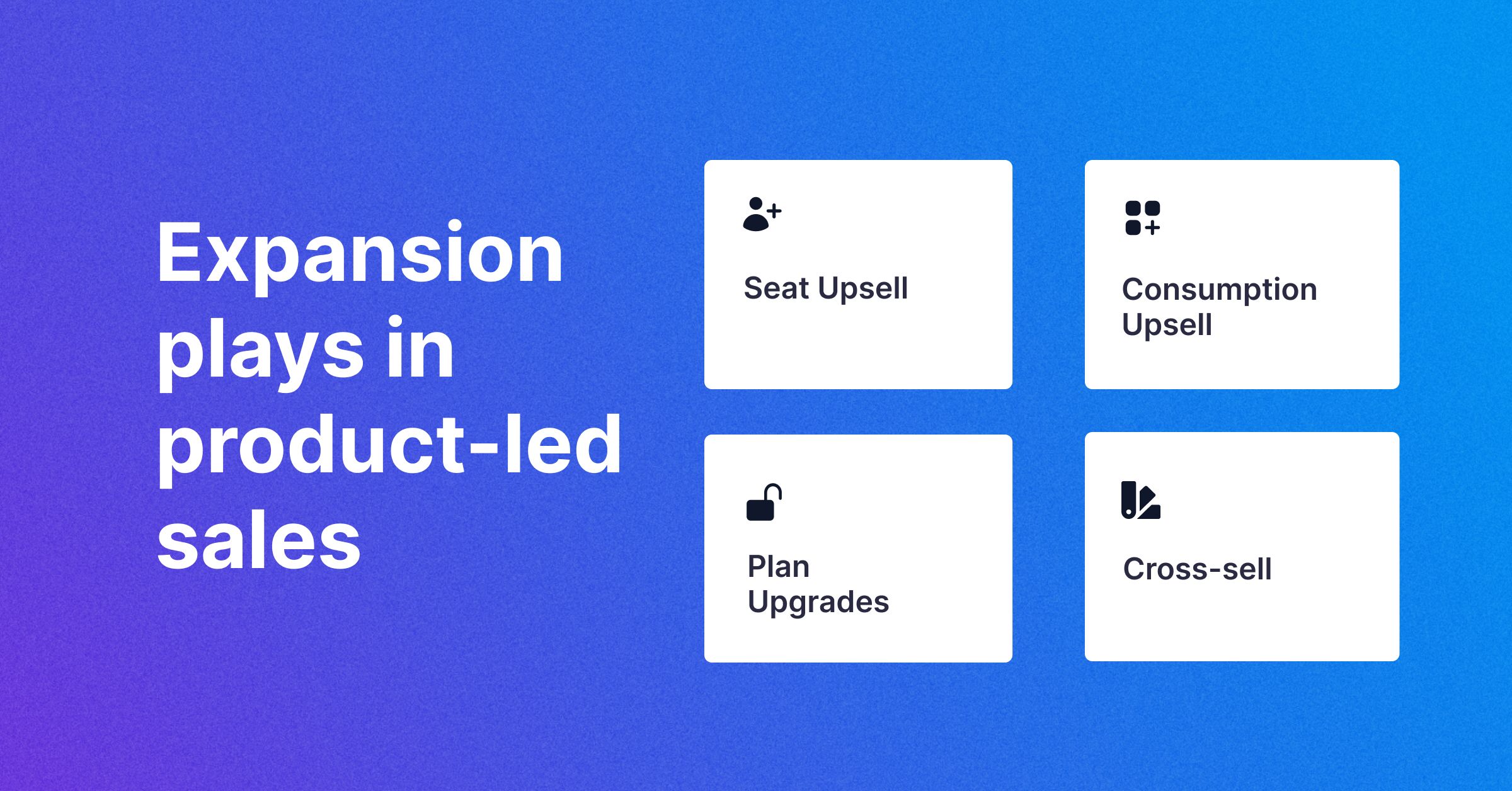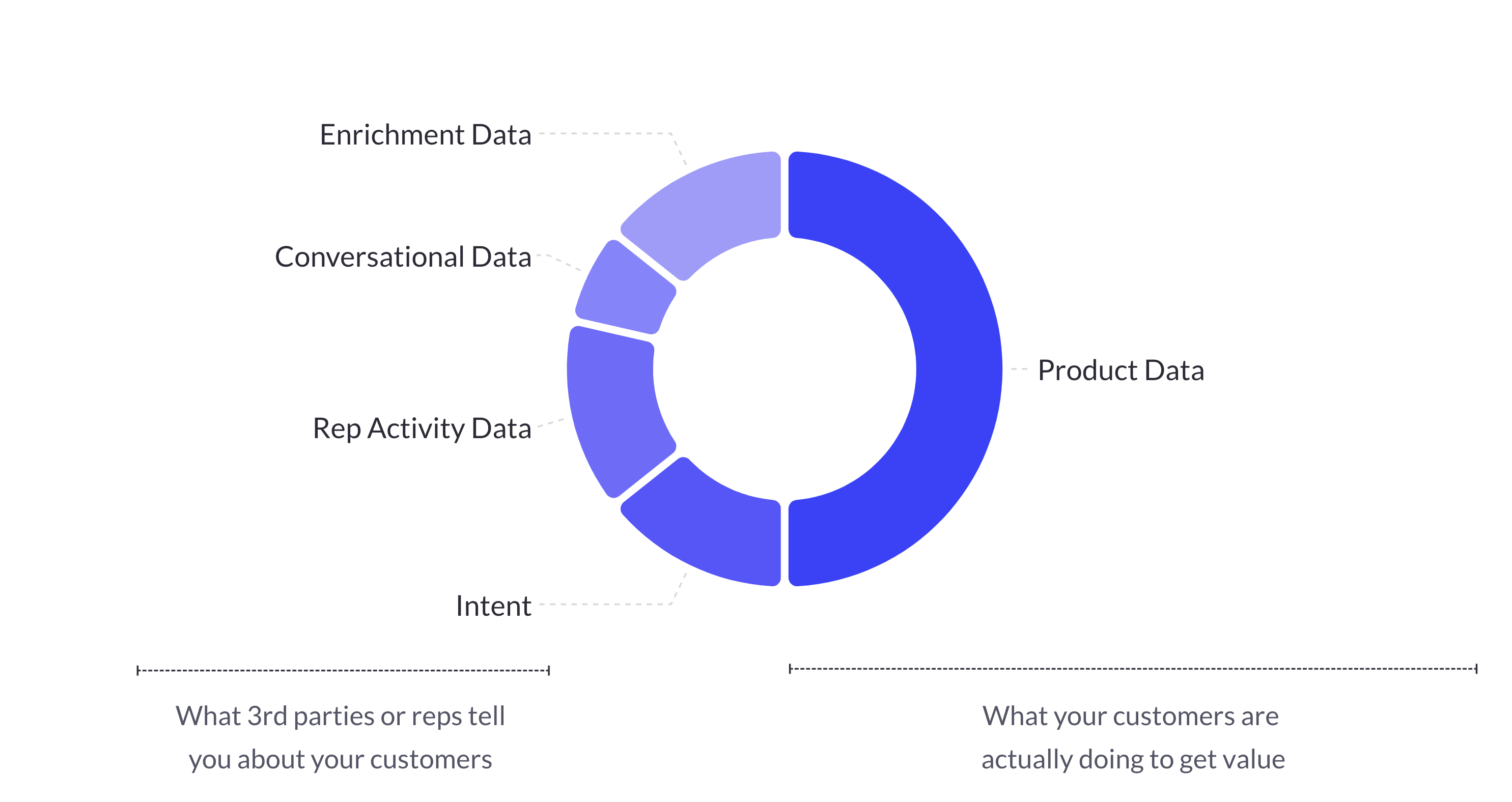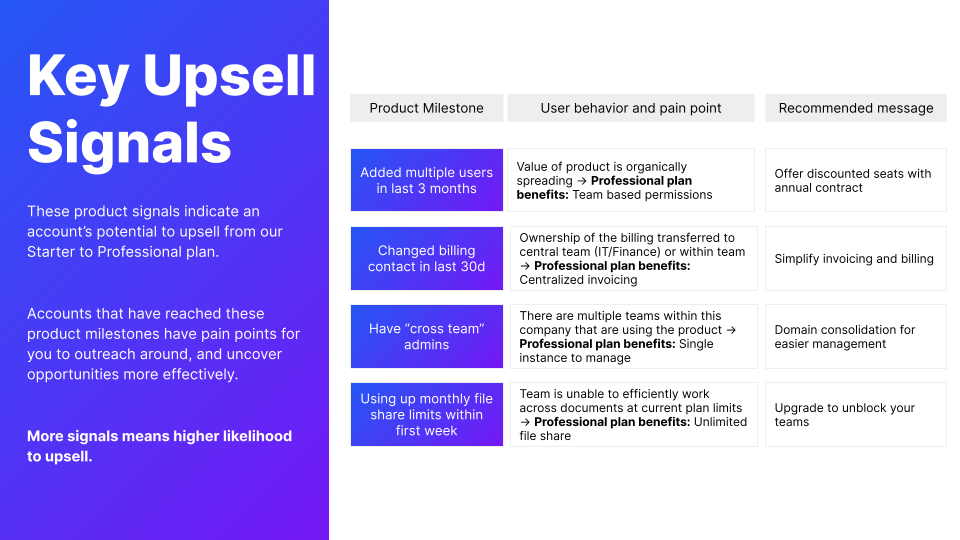
How to run expansion plays with product-led sales
David Henry
Learn about the four types of expansion plays and how to build a playbook that drives expansion revenue

David Henry
Learn about the four types of expansion plays and how to build a playbook that drives expansion revenue
All companies today are shifting strategy to weather the economic storms and three key themes are shining through: How can revenue leaders make sure reps are working at peak productivity? How can you make sure the team is bringing in consistent, low CAC revenue? How can you minimize churn risk as much as possible?
Driving expansion with product data sales hits all three. Product data helps narrow focus for the sales team so they know exactly who they should be targeting, with what message. Expansion revenue is lower cost - it costs at least 5x more to attract new customers and current customers spend 67% more than new customers. Lastly, understanding your expansion strategy is a proactive way to highlight customers who are not healthy and may be churn risk.
Before we get into the details of expansion, let’s first define product-led sales. Product-led sales (or PLS for short) is when product data is a core part of your sales strategy.
Product data is your best intent signal for expansion because it tells you what your users are doing and what their pain points are based on their actual usage. On top of that, it's first party, real-time data that actively changes as people engage, or disengage with your product so you have the most up-to-date information on what’s going on. Lastly, it adapts and learns over time so you can continuously analyze it to learn how specific actions drive revenue conversion.

Product data fuels expansion revenue
Scores can help sales teams know which accounts to prioritize, but Signals are what tell reps when to take action with the context to know how to provide value. There are two types of Signals that play a role in expansion: Sales Signals and Product Signals.
Sales Signals are non-product attributes about an account (sourced from billing systems, demo/firmo data, CRM, etc.) that indicate the account is ripe for expansion. Sales Signals are typically composed of ICP fit and the size of prize.
Product Signals are actions taken in product by the customer (sourced from product data) that correlate with expansion. These are going to be specific to your product but typically align to your packaging and pricing, usage trends that indicate proliferation, and feature adoption that leads to conversion.
The best expansion plays include both sales and product signals; especially sales-led or enterprise sales teams that need critical sales information alongside product usage in order to drive expansion deals as efficiently as possible. The key is to understand the value customers realize using your product via product signals, size the opportunity with sales signals, and drive action with compelling, value-driven messaging based on the customer's real-world usage.
Reps today already use things like firmographic data, such as headquarter location and industry, or marketing behavior, such as clicked an email or visited the website, but when’s the last time that told you someone actually wanted to buy? Product data above all is the closest you’re going to get to the wants and needs of your customer. Full stop.

Four types of expansion revenue
Expansion strategies are based on your pricing model, so how do you find the best expansion strategy for you?
There are four core ways to drive Expansion revenue:
To identify the right Expansion strategy for your team, which Expansion levers you have within pricing, and then understand the Signals that show value for your customers, and then create plays for your sales team around them.
Figma is the standard of excellence for product-led companies and a customer of Endgame. One of the core expansion plays we unlocked for Figma was Pro to Org conversion. Their goal was simple: increase conversion and expansion revenue by upgrading Pro accounts to the Org plan.

ICP fit and Product Signals drive expansion at Figma
Their sales play is built around specific Product Signals that include context on what the user behavior and pain point is that is tied to a recommended value message. This allows reps to click into specific accounts, better understand usage, and personalize Outreach sequences based on the user persona, leading to faster cycles and bigger deals.
One of the key pieces of success for the Figma team was strong enablement. Here’s a template version of the slides they use to help drive adoption and usage of their Expansion play within their sales team!

Expansion playbook
There’s a fine line between plays that are a huge success and those that get left on the shelf. To make sure your roll-out goes off without a hitch, it’s important to keep in mind 3 core principles:
These three steps aren’t fool proof though. It's important to remember that when implementing a new sales play, especially using product data, there should be a full lifecycle loop between marketing, sales, customer success, and product to make sure there’s alignment on messaging, value, and the product experience itself. Check out the guide to launching product-led sales for more details on how to operationalize.
Want help mapping out what expansion strategy is right for your team? Endgame helps you run product-led sales by taking the operational work of each step off your plate and letting you focus on driving cross-functional alignment and success.
Request a demo of Endgame today!